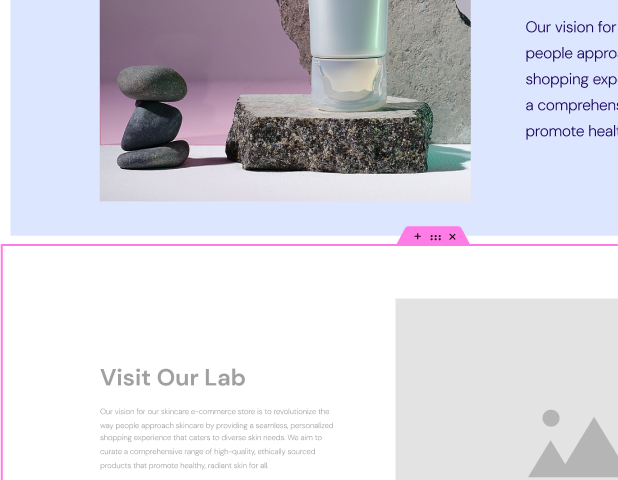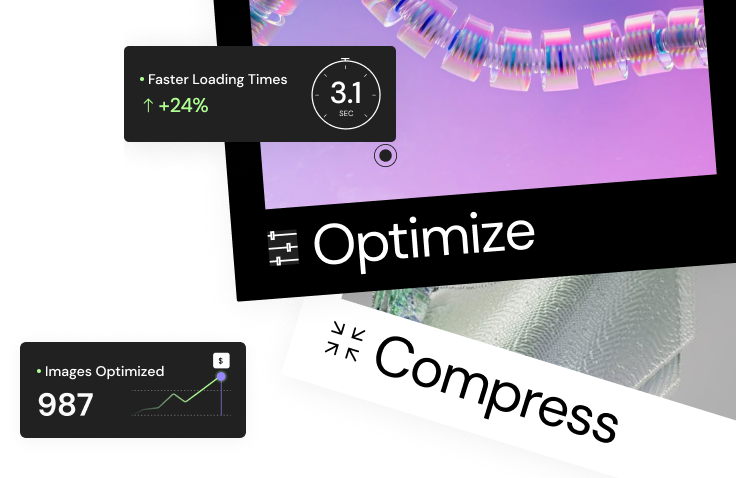Choosing the right web hosting provider is one of the most important decisions you’ll make for your website. Your host affects site speed, reliability, security, and your ability to grow – all vital for success. With so many options out there, picking the best fit can feel tough. This guide compares three popular choices: IONOS, Kinsta, and Elementor Hosting.
We’ll look into their features, strengths, and who they’re best for. This should help you make a smart decision for your WordPress website in 2025. Let’s get started.
IONOS vs Kinsta vs Elementor Hosting in 2025: A Feature Showdown
Selecting a hosting provider means looking beyond just the price. You need to check the technology they use, the features included, the quality of support, and how well the hosting fits your specific needs. This is especially true if you’re building with WordPress and Elementor. Let’s see how IONOS, Kinsta, and Elementor Hosting compare.
Elementor Hosting: The Integrated Solution for Elementor Websites
Elementor Hosting offers managed WordPress hosting built on Google Cloud Platform’s fast C2 compute-optimized infrastructure. Its biggest advantage is how smoothly it works with the Elementor ecosystem.
Key Features:
- Runs on Google Cloud Platform (C2 VMs) for strong performance and reliability.
- Includes Elementor Core builder with all hosting plans. (Important note: While some older plans might have included Pro, Core is now standard. You get the Pro Builder on higher tiers like Basic, Business, Grow, etc.).
- Managed WordPress environment – they handle technical tasks like updates and security monitoring.
- Free SSL certificate included to secure your site.
- Enterprise Cloudflare CDN comes standard for faster loading speeds worldwide.
- Automated daily backups with different storage times (1 day for Lite, up to 30 days for Business).
- NVMe SSD storage used on relevant plans for quicker data access.
- A staging environment (for testing changes safely) is available on Business plans and higher.
- Offers free help migrating your existing website.
- Provides 24/7 expert support that understands both hosting and the Elementor builder.
Benefits:
The all-in-one platform makes your workflow simpler. It’s specifically tuned for Elementor site performance. It uses powerful Google Cloud infrastructure. Plus, it includes valuable tools like a CDN and SSL certificate.
Key Strengths:
Best-in-class integration with the Elementor builder; solid performance foundation; simplified website management for Elementor users.
Who is it Best For?
Individuals, businesses, and agencies building websites mainly with Elementor. It’s great if you value smooth integration, optimized performance, and a hands-off managed hosting environment.
IONOS: The Budget-Friendly & Feature-Rich Option
IONOS is a large, long-standing hosting provider. They offer a very wide range of services, from cheap shared hosting up to VPS and dedicated servers.
Key Features:
- Provides many hosting types: Shared, WordPress, VPS, Cloud, Dedicated Servers.
- Often has extremely low introductory prices, like $1 per month deals.
- Includes a free domain name for your first year on many plans.
- Gives you free Wildcard SSL certificates from DigiCert.
- Uses both traditional HDD and faster SSD storage, depending on the plan. (NVMe storage is likely available on their higher-level cloud or VPS options).
- Offers scalable RAM (memory) options on certain plans.
- Includes features like CDN integration and daily backups even on many basic shared/WordPress plans.
- Offers support through phone and email channels.
Benefits:
Very affordable starting prices. The free domain and SSL certificate add good value. The wide range of hosting types lets you scale up later. Some tests show good loading speeds.
Key Strengths:
Very competitive pricing, especially for the first contract term. Offers a complete range of hosting services. Includes useful freebies like a domain and SSL.
Who is it Best For?
Beginners, small businesses, and users needing basic hosting features on a strict budget, especially benefiting from the low initial cost. It’s also good for those who might need different types of hosting (like VPS) later on.
Kinsta: The Premium Managed WordPress Specialist
Kinsta focuses only on high-end managed WordPress hosting. They use the Google Cloud Platform for their infrastructure and are known for excellent performance, strong security, and knowledgeable support.
Key Features:
- Runs exclusively on the Google Cloud Platform (using the standard network, with C2 VMs available).
- Fully managed WordPress environment – they handle automatic updates and focus heavily on security.
- Features the custom-built MyKinsta dashboard for easy site management.
- Includes free SSL certificates and deep Cloudflare integration (with features like Edge Caching).
- Provides automated daily backups, typically kept for 14 days or more.
- Uses fast NVMe SSD storage across the board for better performance.
- Offers free premium website migrations handled by their experts (the number of free migrations depends on the plan).
- Includes staging environments on every plan for safe testing.
- Provides advanced tools for developers, like SSH access and Git integration.
- Offers 24/7 expert WordPress support through online chat.
- Has a Malware Security Pledge – they promise to fix your site for free if it gets hacked while hosted with them.
Benefits:
Delivers excellent website speed and reliability. Provides top-tier security features. Offers truly expert WordPress support. Features a user-friendly custom dashboard. It’s great for developers needing more control.
Key Strengths:
Strong focus on performance; robust and reliable infrastructure; comprehensive security measures; high-quality customer support; developer-friendly tools and features.
Who is it Best For?
Businesses, agencies, developers, and owners of high-traffic websites who need top performance, security, and reliability. It suits those who value expert WordPress support and have the budget for a premium managed hosting service.
Elementor Hosting shines with its seamless Elementor integration on reliable infrastructure. IONOS attracts users with its very low starting costs and wide variety of services. Kinsta provides premium, high-speed managed WordPress hosting with strong security and expert support, aimed at users with higher budgets and performance needs.
Grow Your Sales
- Incredibly Fast Store
- Sales Optimization
- Enterprise-Grade Security
- 24/7 Expert Service

- Incredibly Fast Store
- Sales Optimization
- Enterprise-Grade Security
- 24/7 Expert Service
- Prompt your Code & Add Custom Code, HTML, or CSS with ease
- Generate or edit with AI for Tailored Images
- Use Copilot for predictive stylized container layouts

- Prompt your Code & Add Custom Code, HTML, or CSS with ease
- Generate or edit with AI for Tailored Images
- Use Copilot for predictive stylized container layouts
- Craft or Translate Content at Lightning Speed
Top-Performing Website
- Super-Fast Websites
- Enterprise-Grade Security
- Any Site, Every Business
- 24/7 Expert Service

Top-Performing Website
- Super-Fast Websites
- Enterprise-Grade Security
- Any Site, Every Business
- 24/7 Expert Service
- Drag & Drop Website Builder, No Code Required
- Over 100 Widgets, for Every Purpose
- Professional Design Features for Pixel Perfect Design

- Drag & Drop Website Builder, No Code Required
- Over 100 Widgets, for Every Purpose
- Professional Design Features for Pixel Perfect Design
- Marketing & eCommerce Features to Increase Conversion
- Ensure Reliable Email Delivery for Your Website
- Simple Setup, No SMTP Configuration Needed
- Centralized Email Insights for Better Tracking

- Ensure Reliable Email Delivery for Your Website
- Simple Setup, No SMTP Configuration Needed
- Centralized Email Insights for Better Tracking

- Ensure Reliable Email Delivery for Your Website
- Simple Setup, No SMTP Configuration Needed
- Centralized Email Insights for Better Tracking
Selecting the Best Hosting Plan for You
To select the most suitable hosting plan, align the host’s offerings with your specific requirements. Consider the following factors:
- WordPress/WooCommerce Optimization: If you’re using WordPress, particularly with Elementor or WooCommerce, seek hosts that are optimized for it, including server settings, caching systems, and WordPress-trained support teams. Elementor Hosting and Kinsta specialize in this area, whereas IONOS, while offering WordPress plans, has a broader focus.
- Website’s Hosting Requirements: The type of site you’re building will determine your hosting needs. A simple blog requires less than a busy online store or a media-heavy portfolio. Estimate your expected traffic, storage needs (for images, videos, themes, plugins), and any special features you may need (like a staging site or specific software versions).
- Future Site Growth: Your hosting should accommodate your site’s growth. Look for plans that allow easy scaling of resources like CPU, RAM, storage, and bandwidth as your traffic increases. Cloud-based hosts like Elementor Hosting and Kinsta, built on platforms like Google Cloud, typically offer better scalability than traditional shared hosting.
- Hosting Budget: Hosting prices vary significantly. IONOS offers low introductory deals, but be sure to check renewal costs. Kinsta has higher upfront costs but includes many premium features. Elementor Hosting provides several tiers, balancing cost and features, especially with the included Elementor Core builder. Calculate the total cost over at least a year, including renewals, for accurate comparison.
- Hosting Reliability & Uptime: Site downtime results in lost visitors and potential revenue. Look for hosts that guarantee uptime (99.9% is common, though some offer SLAs promising more). Managed hosts usually invest more in reliable infrastructure.
- NVMe Server Storage: NVMe SSDs offer faster read/write speeds than older SATA SSDs or HDDs, resulting in quicker page loads and a more responsive WordPress admin area. Kinsta uses NVMe, and Elementor Hosting uses it on relevant plans, giving them a performance advantage. IONOS might offer NVMe on higher-end plans.
- 24/7 Expert Hosting Support: Fast and helpful support is crucial. Check support options (live chat, phone, tickets), availability (ideally 24/7), and expertise level (general vs. WordPress specialists). Kinsta and Elementor Hosting are known for their expert WordPress support.
- User-Friendly Control Panel: Managing your hosting account (domains, backups, databases, staging sites) should be easy. Kinsta provides its custom MyKinsta dashboard. Elementor Hosting integrates site management into its platform. IONOS typically uses a standard control panel like Plesk or its own custom interface.
In summary, determine your site’s technical requirements, budget, growth expectations, and performance needs. If WordPress optimization, NVMe speed, high uptime, and expert support are priorities, choose hosts that excel in those areas.
Key Factors for Smooth Hosting Migration
Moving your website to a new host might seem scary, but good planning makes it much easier.
- Understanding the Data Transfer Steps: Usually, this means backing up your website files (like WordPress core files, themes, plugins, and uploaded media) and your database. Then, you upload these files to your new host and import the database content. Many hosts offer tools or services to help with this process.
- Handling Your Domain Name During Moves: You generally have two choices:
- Transfer the domain: Move your domain registration over to your new hosting provider. This keeps billing in one place but can sometimes take several days to complete.
- Update DNS: Keep your domain registered where it is now and just change the DNS settings (usually the A record and CNAME record) to point to your new host’s server IP address. This method is often faster.
- Choosing Where to Host Your Emails: If your email is currently handled by your old host (maybe through cPanel email), you’ll need a new plan. Options include services like Google Workspace, Microsoft 365, or specialized email hosting companies. Some web hosts offer email hosting, but Kinsta specifically does not. You’ll need to check if IONOS or Elementor Hosting plans include email accounts or if they cost extra.
- Tips to Prevent Downtime When Migrating:
- Try to perform the migration during times when your website gets the least traffic.
- Lower the TTL (Time To Live) value on your DNS records a few hours before you make the switch. This helps the changes spread across the internet faster.
- Test your site thoroughly on the new host before you update the main DNS records. You can often do this using a temporary URL provided by the host or by editing your computer’s ‘hosts’ file.
- Keep your old hosting account active for a few days after switching, just in case you need to switch back temporarily.
- Use the migration service offered by your new host if it’s available and reliable. This is often the simplest and safest option.
- Using Simple One-Click Migration Tools: Many WordPress plugins (like Duplicator, Migrate Guru, WP Migrate DB) and host-specific tools can automate most of the migration steps. Elementor Hosting and Kinsta both offer free migration assistance, which can take the burden off your shoulders.
Plan your move carefully: back up everything, decide how you’ll handle your domain and email, and test thoroughly before going live. Take advantage of host migration services or tools to keep things simple and minimize downtime.
Boosting Site Performance on New Hosting
Switching to a better host is a great start. Now, optimize your site to get the best possible speed.
- Actionable Performance Tuning Tactics:
- Optimize Images: Use tools or plugins (like Smush, ShortPixel, or Elementor’s built-in optimizer) to make image files smaller without losing visual quality.
- Minify Code: Reduce the size of your website’s CSS, JavaScript, and HTML files. Many caching plugins can do this automatically.
- Limit External Scripts: Loading too many scripts from other websites (like analytics tools, ad networks, or custom fonts) can slow down your site. Use only what’s essential.
- Update Everything: Keep your WordPress core software, themes, and plugins up-to-date. Updates often include performance improvements and security fixes.
- Choose a Lightweight Theme: A well-coded, fast theme provides a good performance base.
- Using Caching & CDN for Faster Loading:
- Caching: This stores ready-made copies of your web pages so the server doesn’t have to build them from scratch for every visitor. Hosts like Kinsta and Elementor Hosting have efficient server-level caching built-in. WordPress caching plugins (like WP Rocket or W3 Total Cache) can add further layers like browser caching.
- CDN (Content Delivery Network): A CDN stores copies of your site’s static files (images, CSS, JavaScript) on servers located all around the world. It delivers these files from the server closest to each visitor, speeding up load times significantly. Kinsta and Elementor Hosting include powerful CDNs (using Cloudflare) with their plans. IONOS offers CDN integration as well.
- Gains from Cloud Infrastructure Hosting: Hosts that use major cloud platforms (like the Google Cloud Platform used by Kinsta and Elementor Hosting) benefit from the platform’s built-in advantages. These include easy scalability, high reliability, a global network of data centers, and access to advanced hardware (like GCP’s C2 VMs and NVMe storage).
- Essential Regular Maintenance Routines: Periodically clean up your WordPress database (remove old post revisions, spam comments, and temporary ‘transient’ data). Check for broken links on your site. Regularly test your site’s speed using tools like Google PageSpeed Insights to spot potential issues.
To maximize speed on your new host, optimize your images and code, use caching and a CDN effectively, take advantage of cloud infrastructure benefits, and perform regular site maintenance.
Crucial Security Measures for Your Website
Website security is of utmost importance. While a good web host will provide a secure foundation, it is also your responsibility to ensure your site remains safe. Here are some essential security measures:
- SSL/HTTPS: This encrypts data and protects the connection between your visitors and your server, building trust and boosting SEO. All three hosts (IONOS, Kinsta, Elementor Hosting) offer free SSL certificates.
- Hosting Firewall Rules (WAF): A Web Application Firewall filters incoming traffic and blocks common attacks before they can harm your website. Kinsta and Elementor Hosting include robust WAF protection, often through Cloudflare integration. IONOS may offer WAFs on specific plans or as an add-on.
- Regular Security Checks: Regularly scan your site for malware, backdoors, and known vulnerabilities using WordPress security plugins like Wordfence or Sucuri.
- Backup Strategies & Disaster Recovery: Regular, automatic backups stored off-site are essential. Kinsta and Elementor Hosting provide managed backup services. Ensure you understand the backup process and how to restore your site if needed.
- DDoS & BotNet Defense: Distributed Denial of Service (DDoS) attacks attempt to crash your site by flooding it with fake traffic. Hosts like Kinsta and Elementor Hosting, utilizing platforms like Cloudflare, have systems in place to detect and block these attacks.
- Multi-Factor Authentication (MFA/2FA): Add an extra layer of security to your hosting account and WordPress admin logins. MFA makes it significantly harder for unauthorized users to gain access, even if they know your password.
- 24/7 Security Monitoring: Reputable hosting providers continuously monitor their network and servers for suspicious activity and potential threats. Kinsta and Elementor Hosting emphasize their round-the-clock monitoring.
- Software Updates & Auto Updates: Keeping your WordPress core files, themes, and plugins updated is crucial for patching security holes. Managed hosts often handle WordPress core updates automatically.
- Secure Access (SFTP/SSH): Always use Secure File Transfer Protocol (SFTP) instead of FTP when transferring files. Limit access via Secure Shell (SSH) to only those who absolutely require it.
- Automatic Security Patching: Managed hosting providers often apply important security patches automatically at the server level.
- Dev/Stage/Prod Environments: Use staging environments (provided by Kinsta on all plans and Elementor Hosting on higher tiers) to safely test updates or changes before applying them to your live website.
- Modern Security Protocols: Choose hosts that support the latest security standards, such as TLS 1.3, for encrypting website connections.
Summary: Adopt a multi-layered approach to security by using SSL, a WAF, regular scans, reliable backups, DDoS protection, MFA, software updates, secure connections, and staging sites for testing. Select a host that clearly prioritizes security.
Emerging Trends in Web Hosting
The web hosting landscape is constantly evolving. Key trends to watch include:
- Technological Advancements: Widespread adoption of technologies like containerization (application packaging), serverless computing (code execution without server management), and edge computing (data processing closer to the user) for improved performance, scalability, and efficiency. Increased use of the newer internet protocol, IPv6.
- Green Hosting & Sustainability: Growing focus on eco-friendly practices, including renewable energy use, energy-efficient data centers, and low-power hardware.
- AI & Automation: Increased use of AI for predictive hardware failure analysis, automatic server resource adjustment, intelligent security threat detection, website performance optimization, and smarter customer support.
- Green Energy Hosting Solutions: More hosting providers will offer plans powered by renewable energy or offset by carbon credits, highlighting their commitment to sustainability.
In Summary: The future of hosting lies in sustainability, AI-driven automation, advanced security measures, and new technologies like edge computing for faster, smarter, and greener web solutions.
Conclusion: Making the Right Choice
Choosing between IONOS, Kinsta, and Elementor Hosting in 2025 really comes down to your specific needs and priorities.
- IONOS stands out with its very low starting prices and a broad selection of hosting services. This makes it attractive if you’re on a tight budget or might need different kinds of hosting (not just WordPress) down the line. Just be sure to check the renewal costs and understand that performance can differ across their various plan types.
- Kinsta delivers a premium, high-performance managed WordPress hosting service. It offers strong security, great tools for developers, and truly expert support. It’s an excellent choice for businesses, agencies, and high-traffic sites that need top speed and reliability and are willing to invest in a premium solution.
- Elementor Hosting offers a uniquely integrated solution built specifically for Elementor users. Running on the dependable Google Cloud Platform and bundling the Elementor Core builder, a CDN, security features, and specialized support, it provides strong value and makes building and managing Elementor sites much simpler.
Think carefully about your site’s technical requirements, how much performance you need, your budget, and how central Elementor is to your workflow. By matching these factors to the strengths of each provider, you can confidently choose the host that will best help your website succeed and grow.
Looking for fresh content?
By entering your email, you agree to receive Elementor emails, including marketing emails,
and agree to our Terms & Conditions and Privacy Policy.

